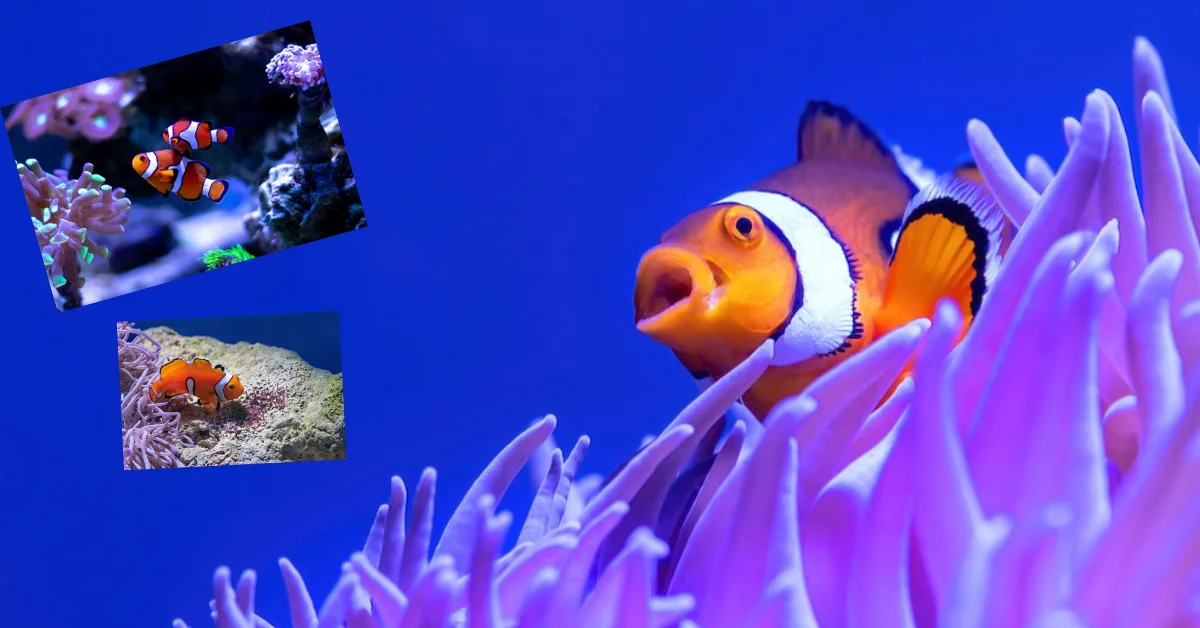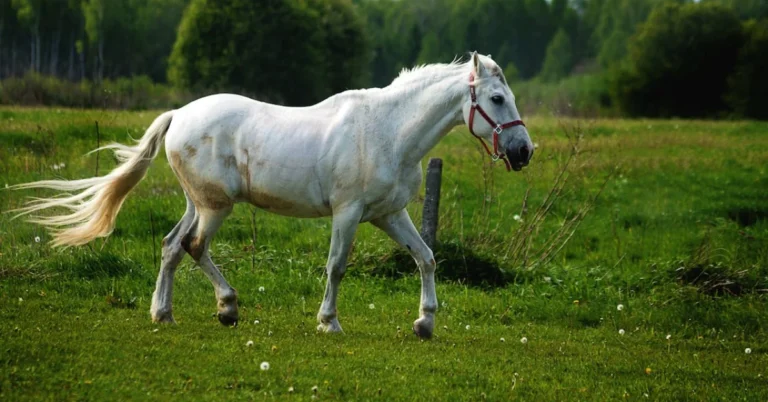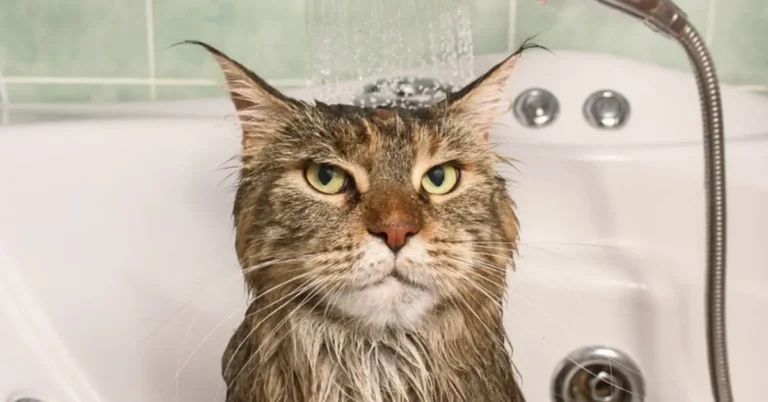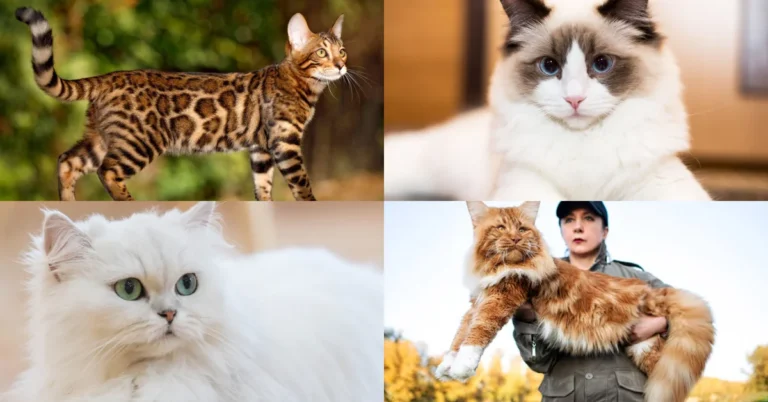With their vibrant orange and white stripes, types of clownfish are amongst the most recognizable and beloved aquarium fish. Their symbiotic relationship with anemones also adds fascinating behaviors to observe. For fishkeeping enthusiasts, clownfish present the full package of visual appeal, interesting biology, and generally hardy health in home aquariums.
This guide dives into the various clownfish types available to aquarists, their distinguishing features, care needs, and anemone partnering dynamics. Ready to bring these charismatic creatures into your underwater oasis? Read on to become a clownfish expert!
Overview of Clownfish Types
Clownfish belong to the subfamily Amphiprioninae under the marine Damselfish family. They are natives of warm tropical waters in the Indo-Pacific and western Indian oceans. There are 30 recognized clownfish species divided into 6 genera:
- Amphiprion – The largest genus with over two dozen species, including common clownfish.
- Premnas – The maroon and large black-saddleback clownfish.
- Stichodactyla – Sebae, Malaysian, and saddleback clownfish.
- Cryptocentroides – The skunk or black-backed clownfish.
- Amphiprioninae – Tomato clownfish.
- Paracentropyge – Blacktail clownfish endemic to the Philippines.
Within these genera are myriad color variations between the bright white bands and orange hue. However, all share similarities like thick vertical stripes, rounded fins, and small sizes under 4 inches.
Popular Aquarium Clownfish Species
While many clownfish types exist across reef habitats, only select captive-bred species are readily available for home aquariums. Here are key details on popular clownfish for aquarists to compare:
- Ocellaris Clownfish
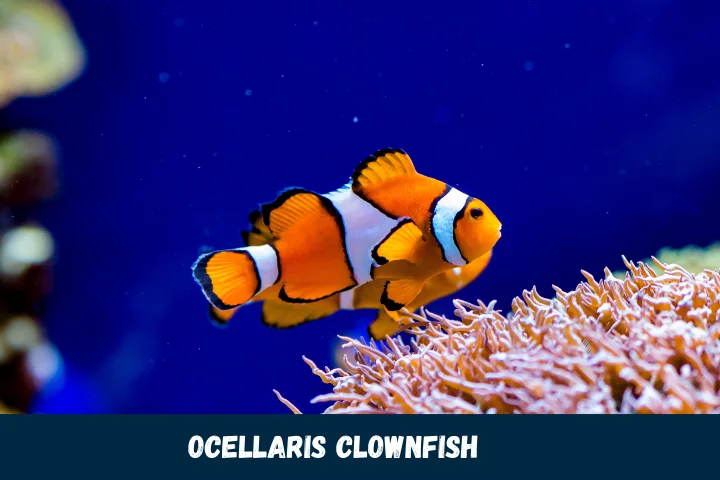
The ocellaris clownfish is one of the most common clownfish kept in home aquariums. These fish have bright white stripes contrasting with orange coloring. Ocellaris clownfish grow to about 3 inches long. They do well in large aquariums of 30 gallons or more with anemones. This species comes from reef habitats in the Indo-Pacific Ocean region.
- Percula Clownfish
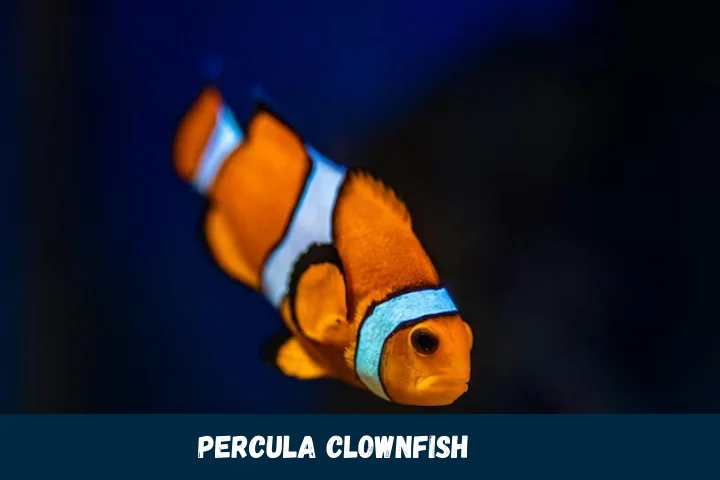
Similar to ocellaris, true percula clownfish exhibit more thin jagged edges between white and orange bands. They also max out around 2.5 inches long and tend to cost slightly more. Perculas hail from the Eastern Indian Ocean and Western Pacific.
- Tomato Clownfish
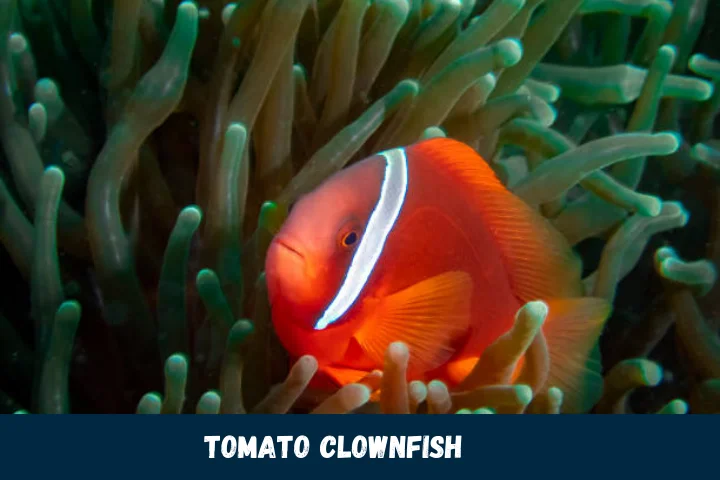
One of the most intensely colored varieties, tomato clownfish live up to their name with a rich reddish-orange shade. Two thick white bands wrap around their small 2-inch-long bodies. They are associated with bubble-tip and carpet anemones in home tanks.
- Sebae Clownfish
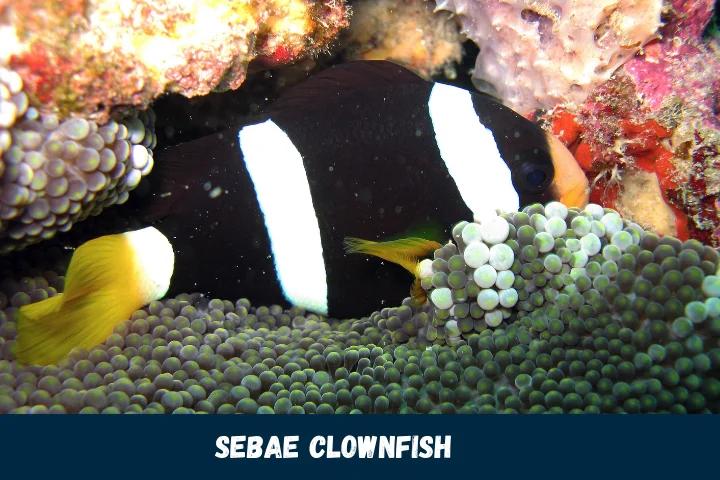
Named after early species describer Albertus Seba, sebae clownfish sport a large black mask-like face with vivid orange on the body and fins. Small maxing out around 3 inches, sebaes prefer large established aquariums with plenty of live rock for grazing.
- Maroon Clownfish
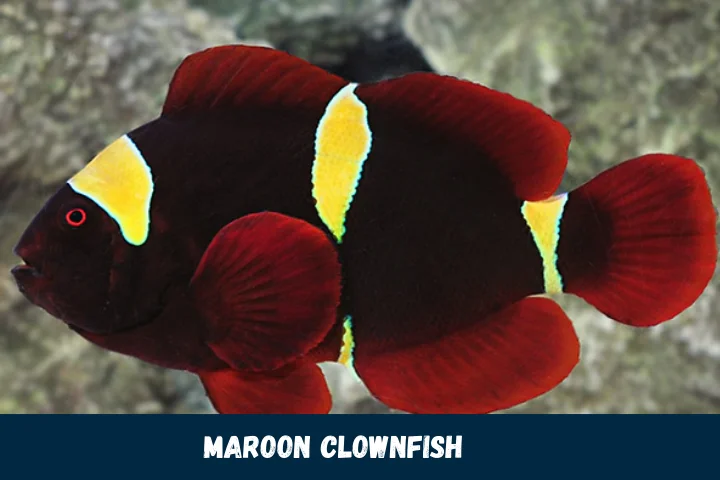
The maroon clownfish earns its name from the deep reddish-brown hue covering most of its body and fins. A single broad white chest and abdominal bar provide contrast. The maroon clownfish, among the larger species, reaches up to 4 inches and requires a minimum tank size of 50 gallons, providing ample swimming space.
- Black and White Ocellaris
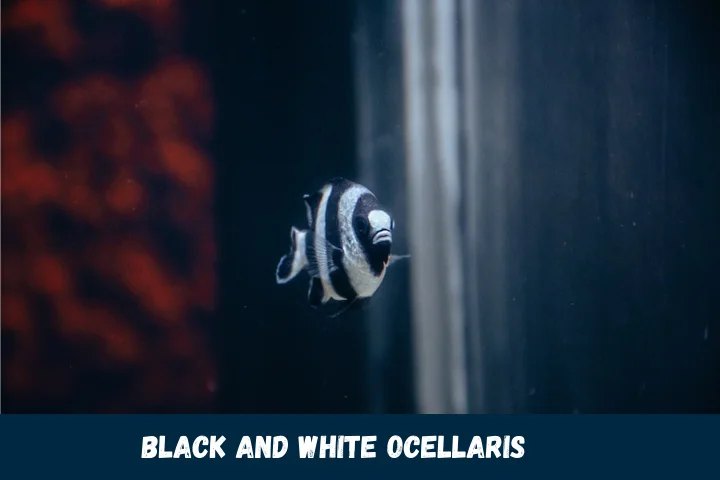
A stunning color morph of the common ocellaris, black and white ocellaris clownfish have a jet-black body with thin white banding. They exhibit the same general care needs and temperament as orange ocellaris morphs.
- Snowflake Clownfish

Another selectively bred ocellaris color variant, snowflake clownfish features a white or pale yellow base body color rather than orange. Thin dark red bands offer contrast. They remain relatively rare and expensive currently.
Clownfish Care Guidelines for Aquarists
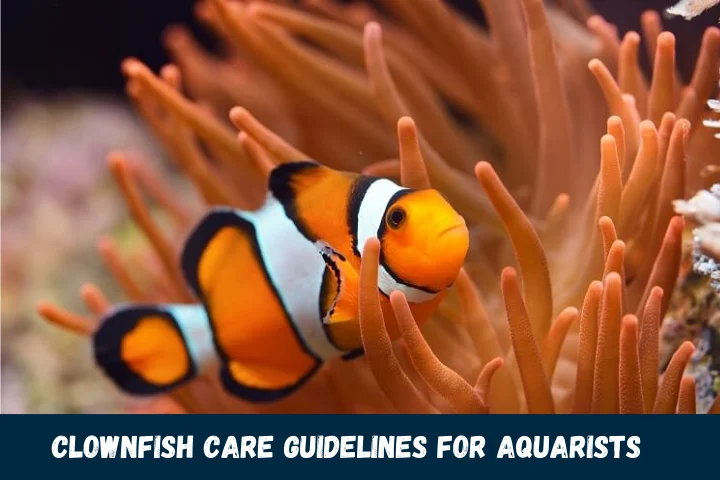
Clownfish are quite hardy once acclimated, but providing proper care optimizes health and longevity in home tanks. Here are key husbandry guidelines:
Habitat Setup
- Tank Size: 30 gallons or larger
- Filtration: Moderate current, canister filter
- Heater: 78-80 F water temperature
- pH: 8.1-8.4
- Substrate: Aragonite sand, crushed coral
- Hiding Places: Live rock, caves
Tankmates
- Peaceful fish: Blennies, cardinals, wrasses, gobies, damsels
- Avoid fin nippers (surgeonfish, triggers), eels, lionfish
- Never pair two clownfish species in one tank
Feeding
- Diet: Omnivorous, flake foods, frozen mysis shrimp, spirulina, seaweed
- Frequency: 2-3 small feedings daily
- Supplements: Selcon, garlic, vitamins
Maintenance
- Weekly 25% water changes
- Test water parameters
- Clean protein skimmer regularly
- Wipe algae from glass
Health Concerns
- Mostly robust fish when acclimated
- Watch for ich infestations and marine velvet
- Ensure proper nutrition and water quality
The Clownfish and Sea Anemone Relationship
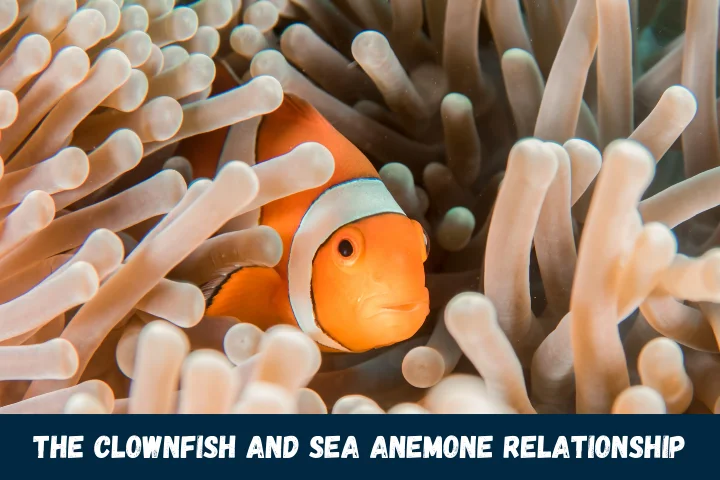
Clownfish and some sea anemones have a symbiotic relationship that allows them to live together. This partnership between the clownfish and sea anemone forms a well-known team underwater. Clownfish have developed special adaptations that let them live safely among the stinging tentacles of the sea anemones they partner with.
Sea Anemone Species Hosted
Clownfish primarily form symbiotic bonds with these anemone types:
- Heteractis magnifica (magnificent sea anemone)
- Stichodactyla gigantea (giant carpet sea anemone)
- Stichodactyla mertensii (Mertens’ carpet sea anemone)
- Cryptodendrum adhesive (adhesive sea anemone)
- Entacmaea quadricolor (bubble-tip sea anemone)
Clownfish Adaptations
Special adaptations allow clownfish to develop immunity to their host anemone’s sting:
- Mucus Coating: Thick protective skin mucus prevents nematocysts from firing.
- Acclimation: Clownfish gradually acclimate to anemone toxins, developing resistance over days or weeks.
- Escape Reflex: Lightning-fast swimming escapes from tentacle contact until fully acclimated.
Symbiotic Benefits
Both parties gain advantages from the symbiotic relationship:
- Shelter for Clownfish: Anemones’ lethal stinging tentacles protect clownfish from predators.
- Nutrition: Clownfish eat scraps from anemone meals and other detritus caught in tentacles.
- Water Circulation: As clownfish swim among tentacles, they oxygenate the water and remove waste.
- Lure for Prey: Colorful clownfish attract small prey towards the anemone for it to consume.
Pairing Clownfish and Anemones
With patience and proper technique, home aquarists can foster clownfish bonding with anemones:
- Obtain tank-raised specimens already conditioned to accept anemones. Wild clownfish rarely adapt successfully.
- Introduce the anemone first and let it fully attach to the rockwork.
- Turn off tank lights and gradually acclimate clownfish to the tank.
- Over days, slowly move the clownfish closer to the anemone until it accepts it. Never force interaction.
- Provide ample refuge for the clownfish to retreat until it develops immunity.
Establishing bonds may take weeks, but the rewards of seeing the symbiosis unfold are well worth the wait.
Clownfish Diet and Feeding
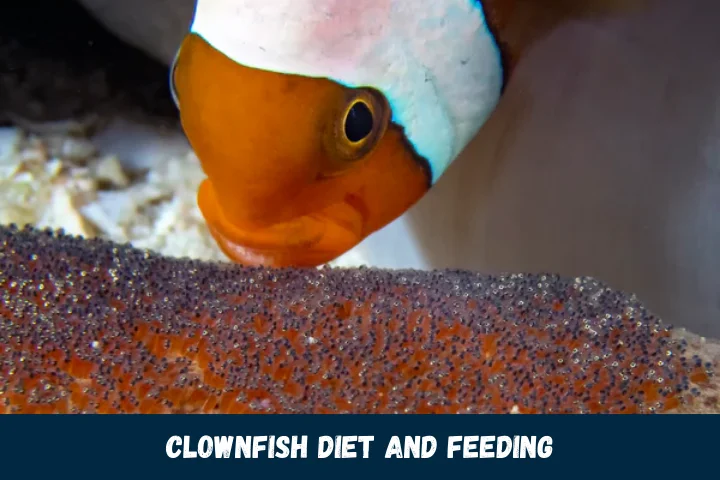
In the wild, clownfish are omnivorous grazers that forage on a diverse menu. Replicating varied nutrition in home aquariums supports their health.
Natural Diets
Clownfish eat a rotating blend of foods in their native coral reefs:
- Zooplankton like copepods
- Detritus and dissolved organic matter
- Coralline algae scraped from rocks
- Anemone tentacle remnants and mucus
- Pelleted fish waste and other detritus
Aquarium Diets
Feed captive clownfish 2-3 times daily with a mixture of:
- High-quality flake foods with marine ingredients like omega-3s
- Meaty frozen foods like mysis shrimp, brine shrimp, and spirulina
- Delicate vegetable matter like nori and marine seaweed
- Small pellets with algae and krill
- Live foods like brine shrimp occasionally
Soak dried foods in tank water briefly before feeding to prevent bloating. Target feeding clownfish directly to ensure they eat, as they are slow-moving and shy. Offer only what they can consume within a few minutes and remove uneaten food promptly.
Nutritional Supplements
Enrich foods with:
- Vitamin drops containing vitamins C, A, D, and E
- Selcon boosts amino acids
- Garlic powder for anti-parasitic benefits
Variety and enrichment ensure clownfish receive well-balanced nutrition supporting health and coloration.
Clownfish Behavior and Personality
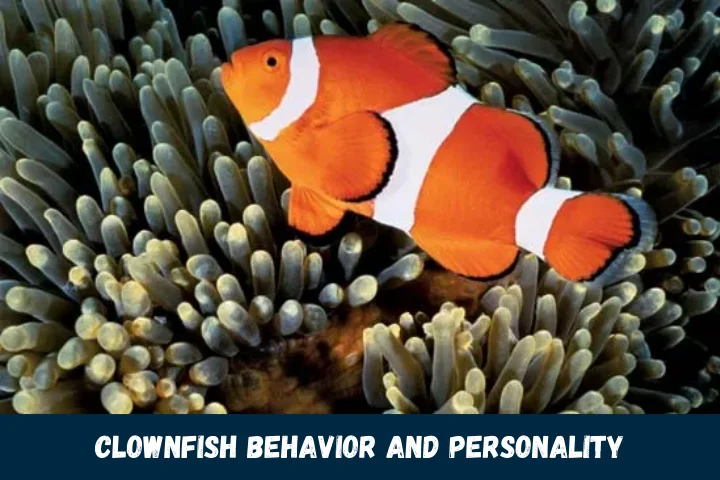
Clownfish may all look similar, but their behaviors and personalities are as unique as any other fish. Learning about typical actions prepares aquarists for success.
Activity Levels
Clownfish are relatively laid-back, spending much of their time resting or casually grazing in live rock and coral. But they also have bold active periods, especially when interacting with tankmates.
Swimming Patterns
Clownfish typically move in short spurts, darting about in zig-zag patterns, not swimming straight like schooling fish. Their rounded pectoral fins give their movement a clumsy, waddling appearance as they scurry through the tank.
Social Interactions
Clownfish are highly social and form structured hierarchies. The largest dominant female develops into a male. Social order is maintained through chasing and displays of aggression.
Reactions to Humans
With time, clownfish become quite bold and will often greet aquarists at the tank front seeking food. Their inquisitive nature and seeming recognition of owners add to their charm.
Anemone Interactions
Paired clownfish show a fascinating range of behaviors with their host anemones including touching tentacles, swimming into openings, and hovering close to the oral disc.
Understanding clownfish mannerisms allows aquarists to provide a comfortable environment. With time, their endearing quirky behaviors shine!
Breeding Clownfish In the Home Aquarium
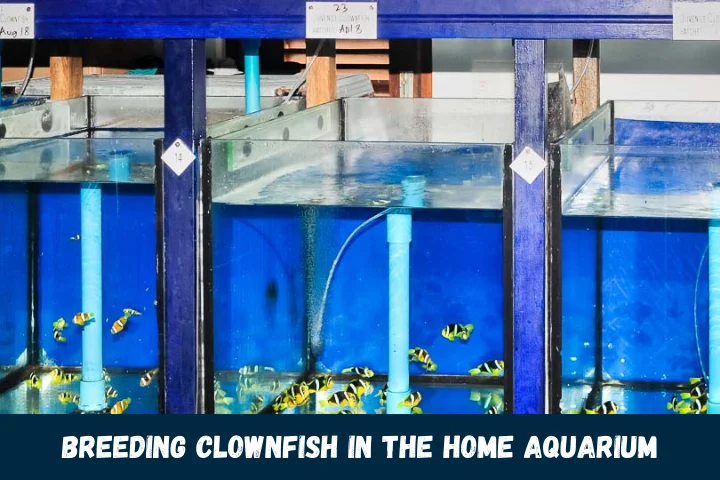
Many aquarists dream of successfully breeding clownfish in their home tank. While not easily achieved, accomplished breeders can offer rewarding insights and advice to aid the process.
Sexing Clownfish
Mature clownfish form monogamous pairs consisting of a breeding female and a sexually mature male. The largest fish becomes the female. Focus your breeding efforts on established pairs.
Spawning Triggers
Several environmental cues can trigger spawning activity:
- Introducing mangrove pods into the tank
- Performing a large water change with slightly cooler water
- Feeding foods with fatty acids like mysis shrimp
Spawning Process
The mating ritual involves these behaviors once triggered:
- The male exhibits courtship dances around the female
- The pair adopts an S-shaped posture and rises together
- Eggs and sperm are released in a gentle upward ascent
- Fertilized buoyant eggs float up into nesting sites
Egg Care
Parental care varies, but typically:
- Eggs adhere underneath rocks or in mangroves above the substrate
- Parents use pectoral fins to fan and oxygenate eggs
- Parents may consume fungus or diseased eggs
Rearing Fry
Hatching and rearing fry presents challenges:
- Eggs hatch in 6-8 days, yielding tiny transparent larvae
- Parents may initially hold fry in their mouths for protection
- Feed newly hatched brine shrimp and rotifers 4-5 times daily
- Siphon out uneaten food to prevent fouling
- Transfer fry to a separate rearing tank once free swimming
With pristine water, high-quality foods, and proper conditioning, home clownfish breeding can certainly be achieved!
Clownfish Conservation in Reef Environments
Several factors in their natural coral reef habitats impact wild clownfish populations requiring conservation efforts.
Overharvesting
Widespread collection for the aquarium trade has led to decreased clownfish numbers in some regions like Vanuatu and the Solomon Islands.
Habitat Destruction
Coastal development, destructive fishing, pollution, coral bleaching, and other factors damage reef environments and clownfish shelters.
Climate Change
Rising ocean temperatures disturb the symbiosis between clownfish and their anemone hosts, reducing available habitat.
Conservation Actions
- Preserve critical reef habitats under marine protected areas
- Promote sustainable aquaculture to reduce wild clownfish collection
- Support local climate change mitigation strategies and coral restoration
- Fund further population surveys and monitoring programs
With focused conservation efforts, these iconic and ecologically important clownfish can continue brightening coral reefs for generations to come.
Final Thoughts
With endless visual appeal, intriguing behaviors, and hardy health in home aquariums, clownfish have secured their place as one of the most prized aquarium fish worldwide. Their small size and low care needs also make them ideal for aquarists of all experience levels.
By selecting the right clownfish species for your tank size, providing excellent water quality and varied nutrition, and exercising patience with anemone pairings, you are sure to find success and enjoyment with these charismatic saltwater fish. Soon your clownfish will be greeting you excitedly and lighting up your underwater oasis with their living stripes of white and orange.

